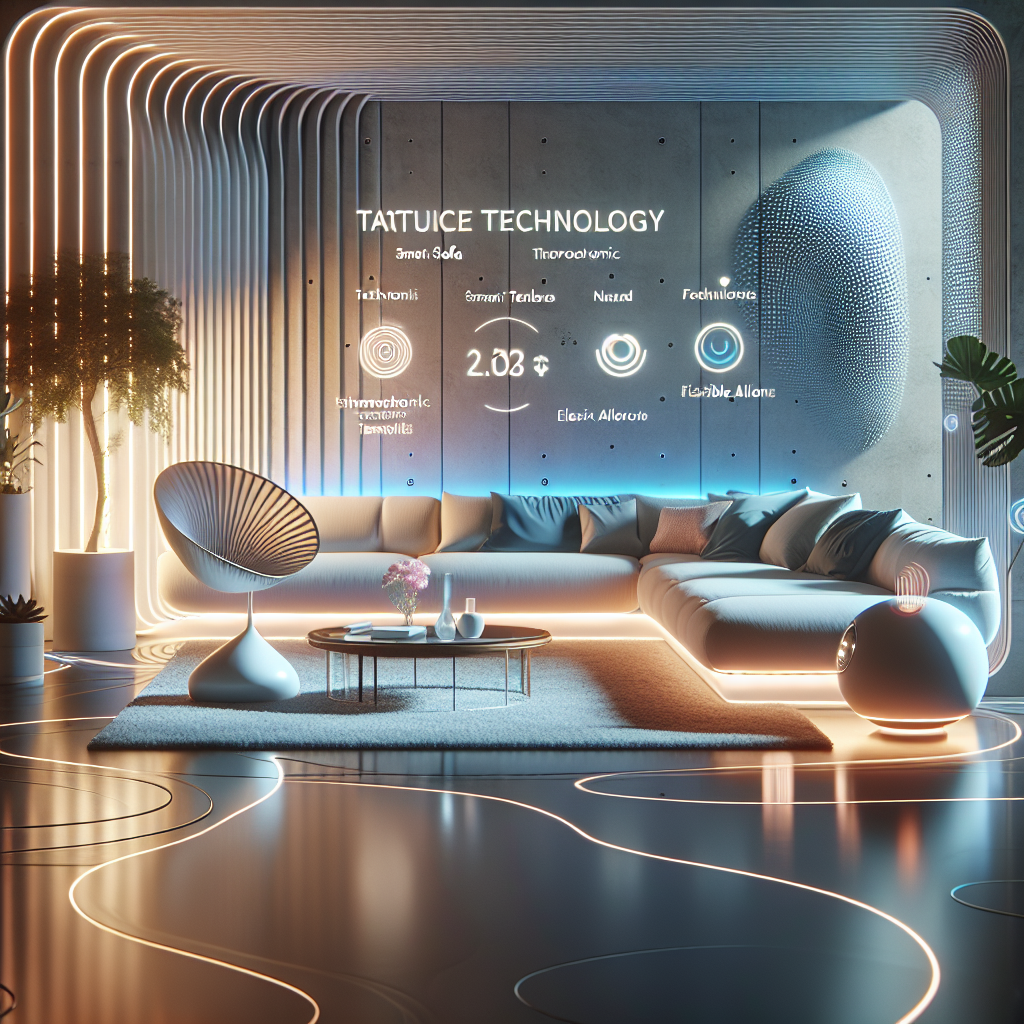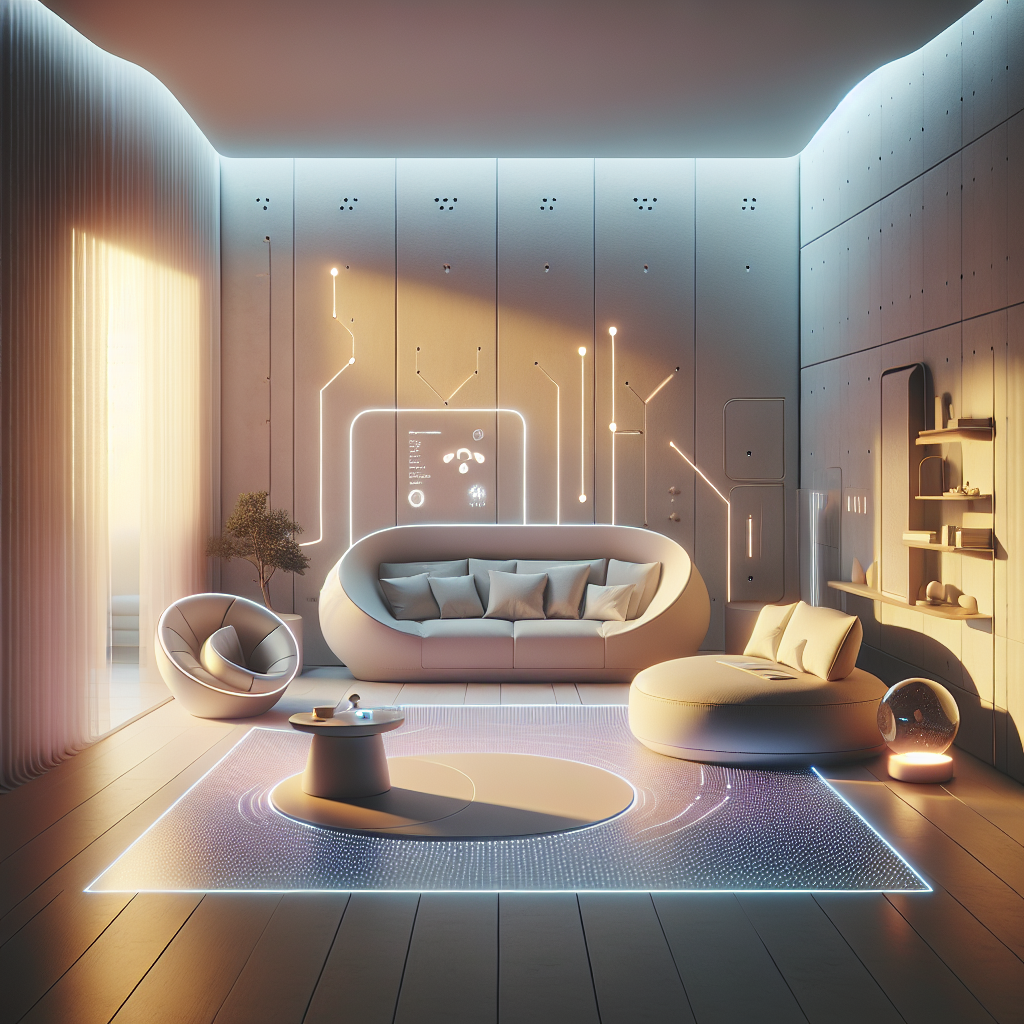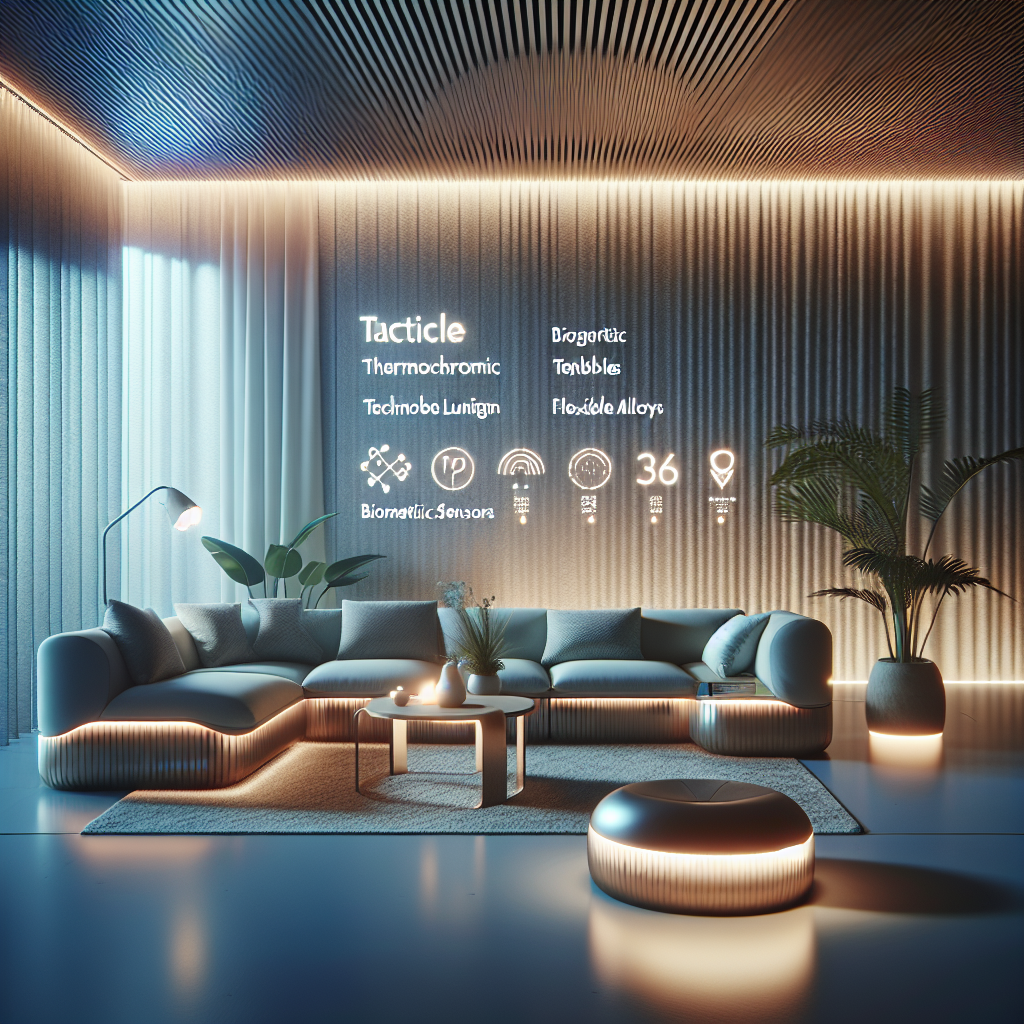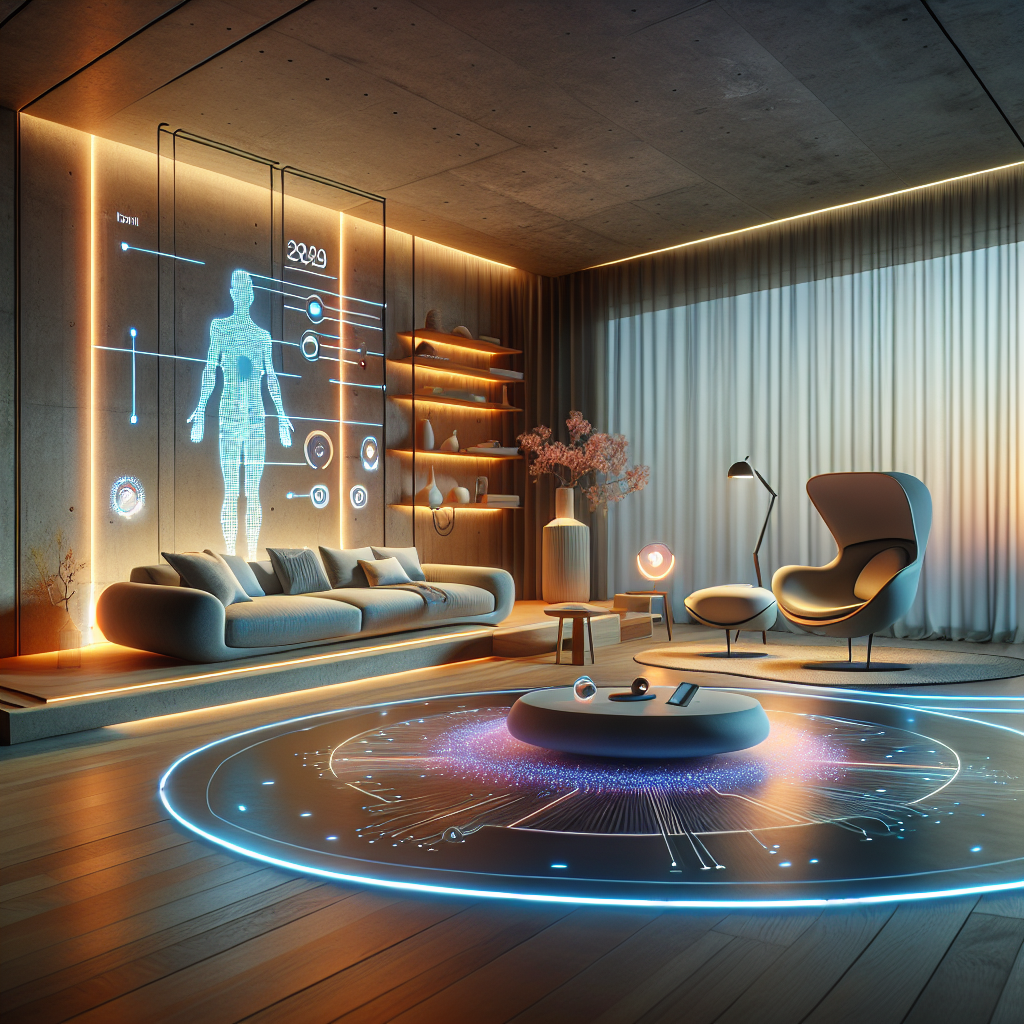Tactile technology furniture: responding to body temperature and pulse

Tactile Technology Furniture: Responding to Body Temperature and Pulse
In the ever-evolving dialogue between design and technology, a new chapter is being written—one that merges human physiology with responsive material intelligence. Tactile technology furniture, capable of reacting to body temperature and pulse, is no longer a speculative fantasy from science fiction. It represents a tangible shift toward environments that sense, adapt, and empathize with their users. This new generation of bio-responsive furniture is redefining comfort, aesthetics, and wellness in both residential and commercial interiors, offering a glimpse into a future where our surroundings understand us on a biological level.
The Emergence of Bio-Responsive Design
Designers and architects have long sought to create spaces that respond to human needs. Yet, until recently, this responsiveness was largely mechanical or digital—smart thermostats, motion-activated lighting, or adjustable seating. The arrival of tactile technology furniture introduces a more intimate layer of interaction: furniture that literally feels you. Using embedded sensors, thermochromic materials, and biometric feedback systems, these pieces detect subtle changes in skin temperature, heart rate, and even micro-movements, adjusting their form, texture, or temperature accordingly.
At the intersection of responsive design and neuroscience, this innovation is part of a broader movement toward human-centric environments. The aim is not only to enhance comfort but to create emotional resonance—spaces that soothe, energize, or focus the mind based on physiological cues. According to a 2024 report by the International Interior Design Association (IIDA), demand for adaptive and sensory-responsive furnishings has increased by over 35% in the luxury hospitality and wellness sectors, signaling a major shift in how we define comfort and functionality.
How It Works: The Science Behind the Sensation
At the core of tactile technology furniture lies a sophisticated interplay between biometric sensors and smart materials. Sensors discreetly embedded within the upholstery or structure measure parameters such as pulse rate and skin temperature. These data points are processed by microcontrollers that trigger responsive mechanisms—such as heating elements, shape-memory alloys, or thermochromic coatings—that subtly adjust the furniture’s surface temperature, firmness, or color.
For instance, a chaise longue upholstered in conductive fabric might warm slightly when it detects a drop in the user’s body temperature, maintaining thermal equilibrium without the need for external heating. Similarly, a meditation chair could monitor heart rate variability, adjusting its ergonomic contour to encourage relaxation. This level of responsiveness transforms static furniture into an active participant in the user’s physiological state, echoing the principles of biofeedback therapy.
Material Innovation: From Thermochromic Textiles to Shape-Memory Alloys
The materials enabling this transformation are as fascinating as the technology itself. Thermochromic textiles—fabrics that change color with temperature—allow furniture to visually express shifts in the user’s warmth, creating a living, breathing aesthetic. Meanwhile, shape-memory alloys like Nitinol enable structural components to subtly morph in response to heat or electrical stimuli, adapting to the user’s posture or pressure points.
In a recent collaboration between MIT’s Tangible Media Group and Italian furniture brand Moroso, researchers developed a prototype sofa that integrates flexible thermoelectric modules. These modules dynamically adjust the seat’s temperature and firmness, guided by biometric data. The result is a piece that feels almost sentient—responsive yet unobtrusive, blending seamlessly into a refined interior landscape.
This convergence of material science and emotional design echoes the philosophy of biophilic design, where the goal is to harmonize the built environment with the rhythms of the human body. Here, the connection is not visual or symbolic but tactile and physiological, offering a new dimension of intimacy between user and object.
Applications Across Design Sectors
While tactile technology furniture has found early adopters in wellness-oriented interiors and luxury hospitality, its potential extends far beyond. In healthcare environments, such responsive systems could monitor patient vitals discreetly, providing real-time comfort adjustments while alerting staff to anomalies. In office settings, ergonomic chairs that respond to pulse and posture could mitigate fatigue and stress, promoting well-being and productivity.
Residential design is perhaps where the emotional potential of this technology shines most vividly. Imagine a living room where the sofa subtly warms during a winter evening, or a reading chair that adjusts its support as your heart rate slows. These gestures, though small, cultivate a profound sense of being cared for by one’s environment—a hallmark of the emerging empathetic design movement.
Architectural firms exploring AI-driven architecture are already integrating such systems into broader smart home ecosystems. By connecting tactile furniture to centralized home intelligence platforms, designers can orchestrate multisensory experiences—lighting, temperature, and texture responding in harmony to human presence and emotion.
Case Studies: The Future Is Already Here
In 2025, the Milan-based studio Carlo Ratti Associati unveiled “Vitae,” a concept collection of tactile furniture designed for wellness retreats. Each piece—crafted from bio-based polymers and woven copper threads—responds to the occupant’s pulse and skin temperature, modulating warmth and pressure to encourage relaxation. The collection’s aesthetic language is minimal yet organic, with surfaces that shimmer subtly as they adapt, reminiscent of living skin.
Similarly, Japanese designer Nendo introduced a prototype lounge chair that integrates piezoelectric sensors and thermoelectric fibers. The chair reads micro-fluctuations in the sitter’s heartbeat, synchronizing its vibration frequency to promote calm—a design informed by research into heart rate variability and emotional regulation. These examples illustrate how tactile technology is no longer confined to laboratories but is shaping the language of contemporary furniture design.
Ethics, Privacy, and the Human Element
As with all biometric technologies, questions of data privacy and ethical design loom large. The intimacy of furniture that reads one’s pulse demands rigorous safeguards. Designers must ensure that data collection remains local and anonymous, avoiding the pitfalls of surveillance or misuse. Yet, when implemented responsibly, this technology can deepen the human connection to space—transforming interiors into empathetic companions rather than intrusive observers.
Philosophically, tactile technology furniture challenges our understanding of material agency. It blurs the boundary between object and organism, inviting us to reconsider what it means for design to be “alive.” This aligns with the broader discourse on posthumanism in design theory, where objects are no longer passive but active participants in human experience.
Designing for Sensation: The Aesthetic Dimension
Beyond its technical prowess, tactile technology furniture introduces a new aesthetic paradigm—one that celebrates subtle transformation. Imagine a lounge where surfaces shift hue as guests settle in, or a gallery bench that cools under bright light, its tone deepening like a living organism adapting to its environment. These micro-interactions create a choreography of sensation, a quiet dialogue between body and object.
Such sensory sophistication recalls the immersive ambitions of interactive installations, yet here the interaction is intimate and domestic. The visual language of these pieces often favors organic curves, translucent membranes, and softly luminescent finishes—materials that convey both warmth and intelligence. The result is furniture that feels less like equipment and more like a living extension of the human form.
The Road Ahead: Toward Emotional Sustainability
As the design industry pivots toward sustainability, tactile technology furniture offers an unexpected complement to ecological responsibility: emotional sustainability. By creating deeper, more meaningful relationships between people and their environments, designers can encourage longevity and attachment—countering the culture of disposability that plagues modern consumption. When a chair responds to your heartbeat, it becomes more than an object; it becomes a companion, one you are less likely to discard.
In this sense, tactile technology furniture represents not just a technical innovation but a philosophical evolution. It redefines comfort as a dynamic dialogue, merges digital intelligence with material sensitivity, and positions design as a medium of empathy. As architects and designers continue to explore the boundaries of responsive environments, one truth becomes clear: the future of furniture is not only smart—it’s sensate.
Tactile technology furniture is poised to transform interiors into living ecosystems—spaces that breathe, listen, and respond. For the discerning designer, it offers a new palette of possibilities: materials that feel, forms that adapt, and experiences that transcend the static. In this quiet revolution, the furniture of tomorrow will not merely support the body—it will understand it.



❮
❯





